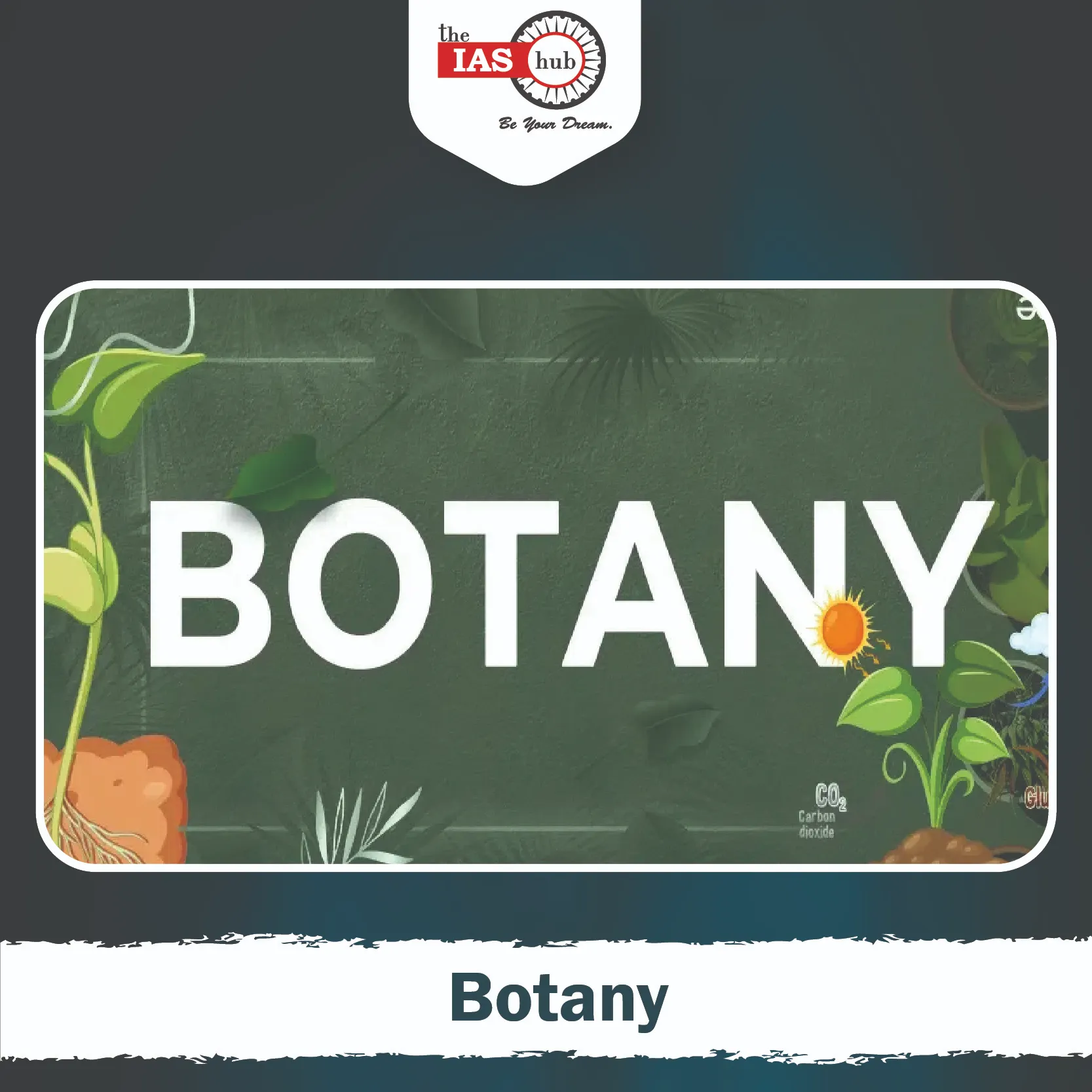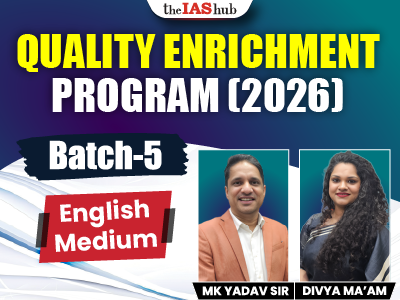The following guide covers the Botany Optional 2025 syllabus, essential books, topper strategies, and tips for scoring the highest marks.
Botany Optional is a popular choice among UPSC Mains candidates. Its scientific approach, clear syllabus, and availability of study material make it a strategic option. This guide explores the Botany Optional syllabus, the best Botany Optional books, past toppers’ strategies, and effective preparation techniques to maximize your score.
Key Benefits of Botany as an Optional Subject
- High Scoring Potential – Botany optional offers a well-defined syllabus with objective answers, making it a high-scoring subject in UPSC Mains.
- Scientific and Concept-Based Approach – The subject relies on conceptual clarity rather than subjective interpretation, making it ideal for candidates with a science background.
- Limited and Predictable Syllabus – The Botany optional syllabus is static, with limited scope for dynamic changes, allowing focused preparation.
- Overlap with General Studies – Topics like ecology, environment, and biotechnology overlap with GS Paper III, reducing the additional study load.
- Availability of Study Material – Standard textbooks, Botany optional books, and research papers provide comprehensive resources for preparation.
- Diagrams and Illustrations – The use of labeled diagrams enhances answer presentation, making responses more structured and visually appealing.
- Scoring with PYQs and Topper Copies – Analyzing Botany optional PYQs and referring to topper copies help in understanding answer patterns and improving writing skills.
- Less Subjective Answer Evaluation – Unlike humanities subjects, Botany answers are based on scientific facts, making evaluation more objective and predictable.
- Ideal for Biology Graduates – Candidates with a background in botany, agriculture, or life sciences find it easier to grasp the subject’s technical aspects.
- Consistent Success Rate – Many UPSC toppers with Botany optional have secured high ranks, proving its reliability as a scoring subject.
UPSC Mains Botany Optional Syllabus 2025 Explained
Below we have attached a table for easy reading of the Botany optional 2025 syllabus:
UPSC Botany Syllabus for Paper 1
Paper 1 of the UPSC Botany syllabus covers foundational concepts in plant biology, including plant anatomy, taxonomy, physiology, and ecology. This paper requires a strong grasp of basic botanical principles and their applications. It forms the backbone for advanced topics in the subject.
Paper I Syllabus
| Topics |
Detailed Syllabus |
| 1. Microbiology and Plant Pathology |
- Structure and reproduction/multiplication of viruses, viroids, bacteria, fungi and mycoplasma; Applications of microbiology in agriculture, industry, medicine and in control of soil and water pollution; Prion and Prion hypothesis.
- Important crop diseases caused by viruses, bacteria, mycoplasma, fungi and nematodes; Modes of infection and dissemination; Molecular basis of infection and disease resistance/defense; Physiology of parasitism and control measures. Fungal toxins. Modeling and disease forecasting; Plant quarantine.
|
| 2. Cryptogams |
- Algae, fungi, lichens, bryophytes, pteridophytes-structure and reproduction from evolutionary viewpoint; Distribution of Cryptogams in India and their ecological and economic importance.
|
| 3. Phanerogams |
- Gymnosperms : Concept of Progymnosperms. Classification and distribution of gymnosperms. Salient features of Cycadales, Ginkgoales, Coniferales and Gnetales, their structure and reproduction.
- General account of Cycadofilicales, Bennettitales and Cordaitales; Geological time scale; Type of fossils and their study techniques.
- Angiosperms : Systematics, anatomy, embryology, palynology and phylogeny. Taxonomic hierarchy; International Code of Botanical Nomenclature; Numerical taxonomy and chemotaxonomy; Evidence from anatomy, embryology and palynology.
- Origin and evolution of angiosperms; Comparative account of various systems of classification of angiosperms; Study of angiosperm families— Mangnoliaceae, Ranunculaceae, Brassicaceae, Rosaceae, Fabaceae, Euphorbiaceae, Malvaceae, Dipterocarpaceae, Apiaceae, Asclepiadaceae, Verbenaceae, Solanaceae, Rubiaceae, Cucurbitaceae, Asteraceae, Poaceae, Arecaceae, Liliaceae, Musaceae and Orchidaceae.
- Stomata and their types; Glandular and non-glandular trichomes; Unusual secondary growth; Anatomy of C3 and C4 plants; Xylem and phloem differentiation; Wood anatomy.
- Development of male and female gametophytes, pollination, fertilization; Endosperm—its development and function. Patterns of embryo development; Polyembryony, apomixis; Applications of palynology; Experimental embryology including pollen storage and test-tube fertilization.
|
| 4. Plant Resource Development |
- Domestication and introduction of plants; Origin of cultivated plants, Vavilov’s centers of origin. Plants as sources for food, fodder, fibers, spices, beverages, edible oils, drugs, narcotics, insecticides, timber, gums, resins and dyes; latex, cellulose, starch and its products; Perfumery; Importance of Ethnobotany in the Indian context; Energy plantations; Botanical Gardens and Herbaria.
|
| 5. Morphogenesis |
- Totipotency, polarity, symmetry and differentiation; Cell, tissue, organ and protoplast culture. Somatic hybrids and Cybrids; Micropropagation; Somaclonal variation and its applications; Pollen haploids, embryo rescue methods and their applications.
|
UPSC Botany Syllabus for Paper 2
Paper 2 focuses on applied botany, emphasizing the economic and social relevance of plants. This paper also addresses plant pathology, tissue culture, and the impact of climate change on vegetation. It is designed to test the candidate’s knowledge of how botanical science can be applied to solve real-world problems.
Paper II Syllabus
| Topic |
Detailed Syllabus |
| 1. Cell Biology |
- Techniques of cell biology. Prokaryotic and eukaryotic cells—structural and ultrastructural details; Structure and function of extracellular matrix (cell wall) and membranes-cell adhesion, membrane transport and vesicular transport; Structure and function of cell organelles (chloroplasts, mitochondria, ER, dictyosomes ribosomes, endosomes,lysosomes, peroxisomes; Cytoskelaton and microtubules; Nucleus, nucleolus, nuclear pore complex; Chromatin and nucleosome; Cell signaling and cell receptors; Signal transduction Mitosis and meiosis; molecular basis of cell cycle. Numerical and structural variations in chromosomes and their significance; Chromatin organization and packaging of genome; Polytene chromosomes; B-chromosomes—structure, behavior and significance.
|
| 2. Genetics, Molecular Biology and Evolution |
- Development of genetics, and gene versus allele concepts (Pseudoalleles); Quantitative genetics and multiple factors; Incomplete dominance, polygenic inheritance, multiple alleles; Linkage and crossing over of gene mapping including molecular maps (idea of mapping, function); Sex chromosomes and sex-linked inheritance; sex determination and molecular basis of sex differentiation; Mutations (biochemical and molecular basis); Cytoplasmic inheritance and cytoplasmic genes (including genetics of male sterility)
- Structure and synthesis of nucleic acids and proteins; Genetic code and regulation of gene expression; Gene silencing; Multigene families; Organic evolution-evidences, mechanism and theories.
- Role of RNA in origin and evolution.
|
| 3. Plant Breeding, Biotechnology and Biostatistics |
- Methods of plant breeding—introduction, selection and hybridization (pedigree, backcross, mass selection, bulk method); Mutation, polyploidy, male sterility and heterosis breeding. Use of apomixis in plant breeding; DNA sequencing; Genetic engineering—methods of transfer of genes; Transgenic crops and biosafety aspects; Development and use of molecular markers in plant breeding; Tools and techniques— probe, southern blotting, DNA fingerprinting, PCR and FISH. Standard deviation and coefficient of variation (CV). Tests of significance (Z-test, t-test and chi-square tests). Probability and distributions (normal, binomial and Poisson). Correlation and regression.
|
| 4. Physiology and Biochemistry |
- Water relations, mineral nutrition and ion transport, mineral deficiencies. Photosynthesis— photochemical reactions, photophosphorylation and carbon fixation pathways; C3, C4 and CAM pathways; Mechanism of phloem transport, Respiration (anaerobic and aerobic, including fermentation)—electron transport chain and oxidative phosphorylation; Photorespiration; Chemiosmotic theory and ATP synthesis; Lipid metabolism; Nitrogen fixation and nitrogen metabolism. Enzymes, coenzymes; Energy transfer and energy conservation. Importance of secondary metabolites. Pigments as photoreceptors (plastidial pigments and phytochrome). Plant movements; Photoperiodism and flowering, vernalization, senescence; Growth substances—their chemical nature, role and applications in agri-horticulture; growth indices, growth movements. Stress physiology (heat, water, salinity, metal); Fruit and seed physiology. Dormancy, storage and germination of seed. Fruit ripening—its molecular basis and manipulation.
|
| 5. Ecology and Plant Geography |
- Concept of ecosystem; Ecological factors. Concepts and dynamics of community; Plant succession. Concepts of biosphere; Ecosystems; Conservation; Pollution and its control (including phytoremediation); Plant indicators; Environment (Protection) Act.
- Forest types of India—‘Ecological and economic importance of forests, afforestation, deforestation and social forestry; Endangered plants, endemism IUCN categories, Red Data Books; Biodiversity and its conservation; Protected Area Network; Convention of Biological Diversity, Farmers’ Rights; and Intellectual Property Rights; Concept of Sustainable Development; Biogeochemical cycles. Global warming and climatic change; Invasive species; Environmental Impact Assessment; Phytogeographical regions of India.
|
Last 5 Years Previous year Botany Optional Papers
Below in the table we have attached the links Botany Optional PYQs:
Botany Optional Success Rates:
Botany is a niche optional in UPSC CSE Exam. It has a higher success rate than many traditional optionals. Below is a table of success rates in different years:
Here is a table showing the success rate of Botany optional:
| Year |
Number of Candidates Appeared |
Number of Candidates Cleared |
Success Rate (%) |
| 2011 |
135 |
9 |
6.7 |
| 2012 |
104 |
12 |
11.5 |
| 2013 |
50 |
7 |
14 |
| 2014 |
58 |
0 |
0 |
| 2015 |
56 |
5 |
8.9 |
| 2016 |
312 |
14 |
4.5 |
| 2017 |
44 |
5 |
11.4 |
Best Books for Botany Optional
Selecting the right Botany Optional books is essential. Here are the most recommended ones:
Books for Botany Paper 1
- Microbiology: Prescott’s Microbiology
- Plant Pathology: Plant Pathology by George N Agrios
- Cryptogams: A Text Book of Botany by Singh, Pandey and Jain
- Gymnosperms: Gymnosperms by S. P. Bhatnagar, Alok Moitra
- Angiosperm Systematics and Families: Plant Systematics by Gurucharan Singh
- Plant Anatomy: Plant Anatomy by Dr. B. P. Pandey
- Plant Embryology: The Embryology of Angiosperms by Sant Saran Bhojwani and S. P. Bhatnagar
- Morphogenesis: Plant Tissue Culture: Theory and Practice by S.S. Bhojwani, M.K. Razdan
- Plant Resource Development: Economic Botany: A Comprehensive Study by SL Kochhar
Books for Botany Paper 2
- Cell Biology: Karp’s Cell Biology by Karp Gerald
- Genetics: Concepts of Genetics by Klug and Cummings
- Plant Breeding: Plant Breeding: Princples and Methods by B D Singh
- Biotechnology: Biotechnology: Expanding Horizons by B D Singh
- Biostatistics: Fundamentals of Biostatistics by Veer Bala Rastogi
- Plant Physiology and Biochemistry: Plant Physiology and Development by Eduardo Zeiger, Lincoln Taiz
- Ecology and Plant Geography: Ecology and Environment by Dr. P D Sharma + Resources from Newspapers, Magazines and Web resources
Best Notes for Botany Optional
You can refer to the Botany optional notes prepared by the IASHub to fast track your preparation. The notes are comprehensive and provide detailed and simple explanations for all the complex terminologies of Botany optional. Our notes are latest, constantly updated and in line with UPSC CSE Mains pattern.
UPSC Botany Optional Topper Copies
To get an idea of UPSC Botany Optional Mains Answer writing, one can also refer to test copies of toppers. You can refer to test copies of Vidushi: Rank 1 in the IFS in 2016, Abhilasha: Rank 2 in the IFS in 2015, Aditya M. Rank 5 in the IFS in 2015, Divya Jyoti Parida: Rank 26 in the IAS in 2015, Sonia Katariya: Rank 115 in the IAS in 2021 etc. to begin your answer writing journey.
IAS Toppers With Botany Optional Subject
Previous Year trends indicate that around 4000 UPSC Aspirants opt for Botany as an Optional Subject for UPSC. Have a look at the UPSC IAS Toppers of previous years who chose Botany as their optional subject.
| Name |
Year |
Rank |
| Nikhil Thawal |
2017 |
799 |
| Dibya Jyoti Parida |
2015 |
26 |
| Stuti Charan |
2012 |
3 |
| Gopala Sundara Raj |
2011 |
5 |
| Ashish Kumar Srivastava |
2010 |
61 |
| Arvind Mallapa Bangari |
2010 |
83 |
Importance of Botany Optional PYQ Analysis
Analyzing Botany Optional PYQ (Previous Year Questions) helps in identifying trends and frequently asked topics. Regular practice of past questions improves answer-writing skills and time management.
How to Use PYQs Effectively:
- Identify repetitive topics and prioritize them.
- Practice writing answers within time limits.
- Compare your answers with Botany Optional topper copies to improve structure and presentation.
How to Score the Highest Marks in Botany Optional
Many candidates have achieved the highest marks in Botany Optional by following a structured plan. Here’s how you can do it:
- Master the Basics
Start with NCERTs to build a strong foundation before moving to advanced books.
- Create Concise Notes
Prepare Botany Optional notes in a structured manner, focusing on key theories, definitions, and diagrams.
- Use Diagrams and Maps
Adding relevant maps and diagrams can improve your answers and help you score better.
- Improve Answer Writing
- Practice daily answer writing.
- Focus on clarity and logical flow.
- Use case studies and current affairs examples.
- Revise Regularly
Consistent revision is key to retaining concepts and improving recall during the exam.
Botany Optional Topper Copies Insights
Referring to Botany Optional topper copies provides insights into effective answer structuring, use of examples, and presentation techniques. Toppers often:
- Use subheadings for better readability.
- Incorporate real-life examples.
- Present diagrams neatly.
Final Tips for Botany Optional 2025 Aspirants
- Follow a Timetable: Stick to a well-structured schedule.
- Solve PYQs: Regularly attempt Botany Optional PYQs for better exam preparedness.
- Join a Test Series: Mock tests help in self-assessment and answer writing improvement.
- Stay Updated: Integrate current affairs into your answers for added relevance.
By following this strategy, you can maximize your chances of securing high marks in Botany Optional 2025. Stay consistent, practice diligently, and aim for excellence in UPSC Mains.
Are you preparing for UPSC 2025? Join IAShub’s UPSC coaching batches to boost your preparation. Enroll now!
Botany Optional FAQs
Yes, Botany is a high-scoring optional with a well-defined syllabus and objective evaluation, making it a great choice for candidates with a science background.
The Botany optional syllabus covers plant biology, physiology, genetics, ecology, and applied botany, divided into two papers focusing on fundamental and applied concepts.
Standard references include NCERTs, Taiz and Zeiger for plant physiology, Pandey and Misra for genetics, and PS Verma for microbiology.
Regularly practice PYQs, refer to topper copies, use diagrams, and structure answers logically with precise scientific explanations.
Yes, topics like environment, ecology, and biotechnology overlap with GS Paper III, reducing the additional preparation burden.












